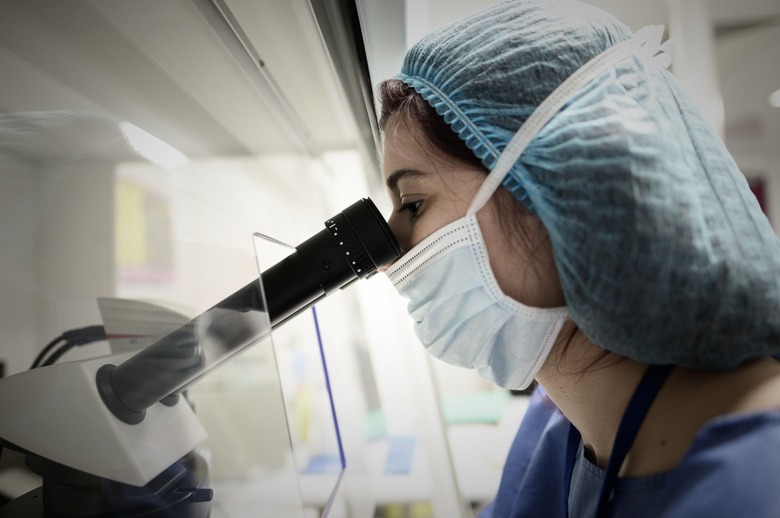Forgotten Women In Science: Esther Lederberg
At the Nobel Prize ceremony back in 1958, a guy named Joshua Lederberg got to go up on stage and receive a Nobel Prize. He had figured out that bacteria can mate and share genes, and he was being recognized with the most coveted prize in science worldwide.
The only problem? His wife had done a ton of the work that made his possible, but she didn't get a Nobel Prize. In fact, she didn't even get a thank you in his acceptance speech.
Only at the time of her death decades later, in 2006, she had started to get some of the national attention she deserved for her discoveries in the genetics of bacteria.
Why Do We Need to Know About the Genetics of Bacteria?
Why Do We Need to Know About the Genetics of Bacteria?
For lots of reasons! When we get sick, it's often because harmful bacteria or viruses are replicating throughout our body. So in order to know how to stop an illness before it gets out of hand, we have to know how that bacteria is reproducing. That way, doctors could figure out some kind of tool to stop that spread.
Before Lederberg's work, we didn't know much about how all kinds of different viruses and bacteria replicated. Did it look similar to human reproduction? Did two bacteria have to come together to make new ones, or could they do it alone? What kind of factors could stop viruses from reproducing?
While working at the University of Wisconsin, Esther Lederberg discovered something that would get some of those answers. It's called phage lambda. At the time, researchers thought that all viruses took over cells, infected them and then exposed nearby cells to the virus by killing, or bursting, the original host cell. Some still do travel that way.
But Lederberg recognized that some types of viruses figure out how to integrate their DNA into host cells and replicate without killing the host right away. Figuring out this new way of replication helps scientists to this day, since now they can figure out how DNA gets transferred and research ways to stop viral spreads.
Later, she also developed a technique known as replica plating. Microbiologists had been trying to figure out how to get bacteria to replicate in a petri dish in the same way that they would in a body, but they couldn't figure out the materials that would mimic it exactly.
She was the only one to realize that the fibers a piece of velvet would act like tiny little needles that transferred bacteria from their samples to a dish. The method showed scientists a crucial piece of information that we're still figuring out how to deal with today: bacteria can develop resistance to antibiotics naturally, even if they haven't been exposed themselves to that drug.
So Why Didn’t She Get the Nobel Prize?
So Why Didn't She Get the Nobel Prize?
The short answer: sexism. Women working in science today still face greater discrimination than their male peers, and during Lederberg's time it was even worse. For some of her career, she worked as an unpaid assistant with so little money that she and some of her fellow unpaid assistants ate the legs of the frogs they were using in experiments.
Even when she did get a job later in her career at Stanford University, she wasn't put on the same tenure track that many of her male colleagues were put on for doing the same kind of work.
We can't go back in time to change the experiences she had back then. But by learning about her and encouraging acceptance in the field of science, we can make sure that more women get recognized on the Nobel stage instead of having to watch from the audience as their husbands get all the credit.
Cite This Article
MLA
Dragani, Rachelle. "Forgotten Women In Science: Esther Lederberg" sciencing.com, https://www.sciencing.com/who-is-esther-lederberg-13725303/. 6 March 2020.
APA
Dragani, Rachelle. (2020, March 6). Forgotten Women In Science: Esther Lederberg. sciencing.com. Retrieved from https://www.sciencing.com/who-is-esther-lederberg-13725303/
Chicago
Dragani, Rachelle. Forgotten Women In Science: Esther Lederberg last modified March 24, 2022. https://www.sciencing.com/who-is-esther-lederberg-13725303/
